
PICMET
Portland International Conference on Management of Engineering
& Technology
Portland, OR 97207-0751
USA Tel: +1 503-725-3525
Fax: +1 503-725-4667
E-Mail: info@picmet.org
http://www.picmet.org
Copyright
© 2000 PICMET |
|
Click the tutorial title to read the
detail information.
-
Anderson, Timothy - "The Joy of Bibliographies:
An Introduction to Bibliography Management Tools"
-
Beyerlein, Mike; Nemiro, Jill - "Creative R, D, & E
Teams"
-
Borduin, Scott - "Design
for the New Millennium: Internet-Centric, Information-Driven Design
Processes"
-
Domb, Ellen - "Accelerating
Innovation with TRIZ"
-
Fiero,
Janet
D.; McGee, E. Craig - "Designing
Fast, Flat, Flexible Organizations"
-
Francis, Alan - "Speakers
Clinic"
-
Gaynor,
Gerard
H. - "Creating
an Environment That Fosters Innovation"
-
Gaynor,
Gerard
H. - "What
Does It Take to Be An Innovator?"
-
Herman, Al - "Competitive Strategies in High-Tech
Industries "
-
Rad,
Parviz
F. - "Project
Management Office Implementation Issues"
-
Rubenstein, Al ;
Geisler, Elie - "Integrating
Scientific and Technical Information (STI) and Knowledge Management (KM)
Systems in R&D-Performing Organizations"
- Saaty,
Thomas
L. - "Analytic
Network Process"
- Shenhar,
Aaron
J. - "Leading
Projects as Strategic, Competitive Weapon"
- Stratton,
Bud; Giard, Bill; Cartwright, John - "Intel's
Path to Becoming 100% e-Corporation"
- White,
Donald (Don) E.;
Patton, John
R.
- "Closing
the Strategic Vision / Implementation Gap for Competitive Advantage"
|
|
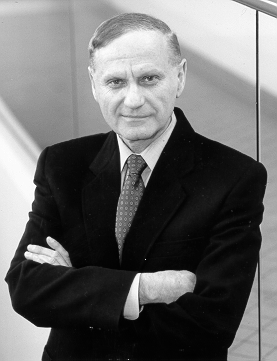 Leading
Projects as Strategic, Competitive Weapon Leading
Projects as Strategic, Competitive Weapon
Aaron
J. Shenhar
Institute
Professor of Management
Stevens Institute of Technology
Wesley
J. Howe School of Technology Management
This
tutorial presents six principles on how to integrate project management
with business strategy. It will show how to lead projects in a strategic
way and how to turn them into successful competitive weapons. The tutorial
will discuss the new role of project leaders, who, instead of just
“getting the job done,” must look at the global business aspects of
their project, develop a specific project strategy, and provide vision and
inspiration to project teams. In addition, it will show why, “one size
does not fit all” and how to adapt project management to specific
project types. The tutorial will show how to create an integrated
strategic project plan and how to build the project’s strategic focus
during day-to-day project execution.
Back
to top
|
|
Closing
the Strategic Vision / Implementation Gap
for Competitive Advantage
Donald (Don) E. White
Professor,
Cal
Poly University
John
R. Patton
President,
CADENCE
Management Corporation
This
tutorial focuses on how a firm can close the gap between its strategic
vision and its operational implementation, and thereby create a
sustainable competitive advantage. It presents Strategic Management
By Projects (SMBP) as an approach to link and tightly integrate the
strategic plan with its implementation. The approach focuses on the
strategic portfolio of strategy fulfilling projects, identifies critical
integrative links, processes, and metrics, and highlights case study
results.
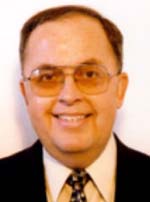 Dr.
Don White is Professor of Industrial and Manufacturing Engineering at
Cal Poly University, San Luis Obispo, CA. His education includes both
engineering ( B.S.M.E. U.C. Berkeley, Ph.D. Case Western Reserve
University) and business (M.B.A. Pepperdine University). Dr. White's has had 19 years industry experience (engineering and
managerial) with: Pacific Telesis, ARCO, Exxon, Bell Labs, and Lawrence
National Labs in diverse functional and cross-functional areas (e.g.,
strategic planning and implementation, project/product development and
management, marketing/manufacturing/financial operations). Dr.
Don White is Professor of Industrial and Manufacturing Engineering at
Cal Poly University, San Luis Obispo, CA. His education includes both
engineering ( B.S.M.E. U.C. Berkeley, Ph.D. Case Western Reserve
University) and business (M.B.A. Pepperdine University). Dr. White's has had 19 years industry experience (engineering and
managerial) with: Pacific Telesis, ARCO, Exxon, Bell Labs, and Lawrence
National Labs in diverse functional and cross-functional areas (e.g.,
strategic planning and implementation, project/product development and
management, marketing/manufacturing/financial operations).
At Cal Poly, his research interests have included: new product
development, integrated change management, economic decision making,
strategic management, and project management. Also, he was instrumental in
establishing the interdisciplinary M.B.A./M.S. Engineering Management
Program (EMP) and its Industry/University Partnership.
|
|
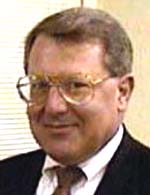 John
Patton is President of CADENCE Management Corporation. John's
leadership in the development and dissemination of state-of-the-art
project management techniques has established him as one of the industry's
leading "change masters". John's consulting experience
includes assignments on numerous multi-million dollar new product
development projects around the world. His career has encompassed
every aspect of project management, from strategic planning to
construction and product introductions. John's recent assignments
include course delivery and consulting in Spanish to Latin American
companies, new product launches in Europe and training in Japan. John
Patton is President of CADENCE Management Corporation. John's
leadership in the development and dissemination of state-of-the-art
project management techniques has established him as one of the industry's
leading "change masters". John's consulting experience
includes assignments on numerous multi-million dollar new product
development projects around the world. His career has encompassed
every aspect of project management, from strategic planning to
construction and product introductions. John's recent assignments
include course delivery and consulting in Spanish to Latin American
companies, new product launches in Europe and training in Japan.
Back
to top
|
|
Integrating
Scientific and Technical Information (STI) and Knowledge Management (KM)
Systems in R&D-Performing Organizations
Al
Rubenstein
Professor
Emeritus, Northwestern University and President, International Applied
Science and Technology Associates (IASTA, Inc.).
Elie
Geisler
Illinois
Institute of Technology
This
will be an interactive session on the practical issues of providing
information sources and channels to actual and potential users of the
outputs of R&D. It will address design variables for systems
that will improve accessibility for non-technical people in production,
marketing, customer service, general management and other non-R&D
groups in the organization. Many such groups have traditionally
encountered difficulties in trying to get at and effectively use the
outputs of R&D to help them in doing their own jobs. The focus
is on cost-effective integration or strong interfacing of R&D-oriented
STI systems and company-wide and application-oriented KM systems.
Participants are encouraged to present “mini-cases” (5 minutes each)
of their organizations’ attempts (successful or not) to accomplish such
integration. The moderators will introduce the session with brief
presentations on key issues, based on their several decades of research
and consulting on STI and KM systems and on R&D/Technology Management.
A new paper, “Knowledge Management Systems: Effective Rollout and
Operation to Meet User Needs” will be included in the PICMET Proceedings
as background reading.
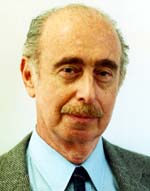 Al Rubenstein is
Professor Emeritus of Industrial Engineering and Management Science at
Northwestern University and President of International Applied Science and
Technology Associates (IASTA, Inc.). At MIT and Northwestern he
established the program on Management of Research, Development, and
Innovation (POMRAD) and at Northwestern the Master of Engineering
Management program and the Center for Information and Telecommunication
Technology. He is author of almost 200 articles and books on
R&D/Technology Management. He has been director of two companies
and consultant to more than 100 industrial and governmnet organizations in
the U.S., Europe and Japan. Several book publishers are reprinting
his book Managing Technology in the Decentralized Firm. Among his
awards are Pioneer in Innovation, Engineering Manager of the Year and an
Honorary Doctorate in Engineering. He is former editor of the IEEE
Transactions on Engineering Management. Al Rubenstein is
Professor Emeritus of Industrial Engineering and Management Science at
Northwestern University and President of International Applied Science and
Technology Associates (IASTA, Inc.). At MIT and Northwestern he
established the program on Management of Research, Development, and
Innovation (POMRAD) and at Northwestern the Master of Engineering
Management program and the Center for Information and Telecommunication
Technology. He is author of almost 200 articles and books on
R&D/Technology Management. He has been director of two companies
and consultant to more than 100 industrial and governmnet organizations in
the U.S., Europe and Japan. Several book publishers are reprinting
his book Managing Technology in the Decentralized Firm. Among his
awards are Pioneer in Innovation, Engineering Manager of the Year and an
Honorary Doctorate in Engineering. He is former editor of the IEEE
Transactions on Engineering Management.
|
|
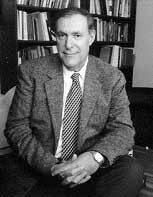 Eliezer
Geisler is Professor of Organizational Behavior at the Stuart Graduate
School of Business, Illinois Institute of Technology, and Director of the
Center for Management of Medical Technology (CMMT).
He holds a doctorate from the Kellogg School at Northwestern
University. Dr. Geisler is the author of over 80 scientific publications
and five books, the most recent: The Metrics of Science and Technology
(Greenwood Publishing group, 2000) and Creating Value with Science and
Technology (Greenwood Publishing Group 2001).
He was Chair of the College of Innovation Management and
Entrepreneurship division of INFORMS, department editor for information
technology for the IEEE Transactions on Engineering Management, and
associate editor for the International Journal of Healthcare Technology
and Management. His research and consulting interests are evaluation
and metrics of science and technology, the management of medical
technology, and the strategic management of technology. Eliezer
Geisler is Professor of Organizational Behavior at the Stuart Graduate
School of Business, Illinois Institute of Technology, and Director of the
Center for Management of Medical Technology (CMMT).
He holds a doctorate from the Kellogg School at Northwestern
University. Dr. Geisler is the author of over 80 scientific publications
and five books, the most recent: The Metrics of Science and Technology
(Greenwood Publishing group, 2000) and Creating Value with Science and
Technology (Greenwood Publishing Group 2001).
He was Chair of the College of Innovation Management and
Entrepreneurship division of INFORMS, department editor for information
technology for the IEEE Transactions on Engineering Management, and
associate editor for the International Journal of Healthcare Technology
and Management. His research and consulting interests are evaluation
and metrics of science and technology, the management of medical
technology, and the strategic management of technology.
Back
to top
|
|
Designing
Fast, Flat, Flexible Organizations
Janet
D Fiero and E. Craig McGee
The software development industry is
one of the most dynamic, fast-paced industries in the world. New versions
of software can be released every six to twelve months. New technology
renders existing software systems obsolete overnight. Strategic alliances
form and disband rapidly. Technology components are licensed to apparent
competitors. A competitor one month is a collaborator the next. Consider
the technology startups...Netscape, America OnLine, Iomega, etceteras. All
have experienced rapid growth and success. This tutorial teaches basic
principles for designing organizations that results in a fast and flexible
organization staffed with motivated and responsible employees at all
levels. The authors will use a real-life case to describe how one software
development company utilized teams to reduce its time-to-market for new
products. It is the story of an entrepreneurial startup that transformed
itself into part of a multi-billion dollar international corporation. It
is the story of survival...creating robust, efficient processes to support
the company’s growth. It was critical to be able to get new products and
enhancements to customers. This tutorial will assist engineering managers
transitioning from a functional organization to a product aligned
team-based organization.
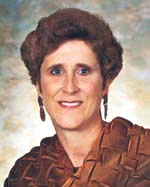 Janet
D. Fiero, Ph.D., MBA worked in semiconductor companies for 17 years as
an engineer, manager and internal consultant before starting her own
consulting business in 1985. Her consulting expertise began with quality
management and has transitioned into change management and organizational
development. She has been selected four times to serve as an examiner for
Malcolm Baldrige National Quality Award. She earned her Ph.D. in Human and
Organizational Systems from The Fielding Institute in 2000. Janet
D. Fiero, Ph.D., MBA worked in semiconductor companies for 17 years as
an engineer, manager and internal consultant before starting her own
consulting business in 1985. Her consulting expertise began with quality
management and has transitioned into change management and organizational
development. She has been selected four times to serve as an examiner for
Malcolm Baldrige National Quality Award. She earned her Ph.D. in Human and
Organizational Systems from The Fielding Institute in 2000.
|
|
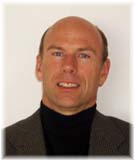 Craig
McGee, Ph.D. has over twenty years experience in change management
with extensive background in organization assessment and development,
organization design, team development, process improvement, management
development, labor relations, and compensation. He has served in external
consulting, corporate staff and line management roles, and has the ability
to blend a strong technical background with pragmatic, sound business
judgment. Craig received a Ph.D. in Industrial/Organizational Psychology
from the University of Tennessee. Craig
McGee, Ph.D. has over twenty years experience in change management
with extensive background in organization assessment and development,
organization design, team development, process improvement, management
development, labor relations, and compensation. He has served in external
consulting, corporate staff and line management roles, and has the ability
to blend a strong technical background with pragmatic, sound business
judgment. Craig received a Ph.D. in Industrial/Organizational Psychology
from the University of Tennessee.
Back
to top
|
|
Accelerating
Innovation with TRIZ
Ellen
Domb
The
PQR Group
Upland, California, USA
The participants
will be able to use the TRIZ tools to solve real technical problems in
their own organizations. They will be familiar with the basic precepts of
TRIZ, and will be able to recognize situations where TRIZ can be of use.
They will be able to recognize the need for TRIZ in conjunction with the
tools that they are already using. and to use them together.
Description:
"TIPS" is the acronym for "Theory of Inventive Problem
Solving," and "TRIZ" is the acronym for the same phrase in
Russian. TRIZ was developed by Genrich Altshuller and his colleagues in
the former USSR starting in 1946, and is now being developed and practiced
throughout the world.
TRIZ research began
with the hypothesis that there are universal principles of invention that
are the basis for creative innovations that advance technology, and that
if these principles could be identified and codified, they could be taught
to people to make the process of invention more predictable. The research
has proceeded in several stages over the last 50 years. Over 2 million
patents have been examined, classified by level of inventiveness, and
analyzed to look for principles of innovation. The three primary findings
of this research are as follows:
1. Problems and
solutions were repeated across industries and sciences
2. Patterns of
technical evolution were repeated across industries and sciences
3. Innovations used
scientific effects outside the field where they were developed
In the application
of TRIZ all three of these findings are applied to create and to improve
products, services, and systems.
The TRIZ workshop is
an interactive session. The instructor introduces each topic, and
demonstrates the use of each technique and tool. The participants work as
individuals applying the Ideal Final Result to practice problems and to
problems in their own organizations.
The participants are
formed into teams to learn the 40 Principles of Inventive Problem Solving.
The teams apply the 40 Principles to the collective experience of their
teams, then to the practice problem, to equip them to use the technique
after the class. Examples from e-business and the e-World will be used to
demonstrate the applicability of TRIZ to the main theme of the conference.
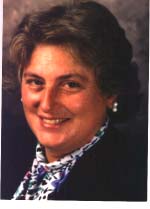 Ellen
Domb is the President of The PQR Group, a consulting firm specializing
in helping organizations maximize customer satisfaction, productivity and
profits through strategic management of quality and technology. She has
been a Director of the Aerojet Electronic Systems Division with specific
responsibility for Total Quality Management implementation. She guided
Aerojet and many of its suppliers in developing and using systems to
improve the quality of their processes, products and services, shorten
development time for new products and services, and achieve dramatic
increases in customer satisfaction through continuous process improvement. Ellen
Domb is the President of The PQR Group, a consulting firm specializing
in helping organizations maximize customer satisfaction, productivity and
profits through strategic management of quality and technology. She has
been a Director of the Aerojet Electronic Systems Division with specific
responsibility for Total Quality Management implementation. She guided
Aerojet and many of its suppliers in developing and using systems to
improve the quality of their processes, products and services, shorten
development time for new products and services, and achieve dramatic
increases in customer satisfaction through continuous process improvement.
Dr.
Domb's academic background ranges from Stanford University's Executive
Management Program to a Ph.D. in physics from Temple University and a
bachelor's degree from MIT. She is a founding board member and Judge for
the California Council on Quality and Service. She is a charter member of
the Quality Function Deployment Institute, co-founder of The TRIZ
Institute, and editor of The TRIZ Journal, http://www.triz-journal.com.
Dr.
Domb speaks frequently to business and professional groups on the impact
of TQM on organizations and on accelerating new product development using
TRIZ and quality function deployment. She is an instructor for San Diego
State University, The Claremont Graduate School, George Washington
University, GOAL/QPC, and The American Supplier Institute. She is the
co-author of Beyond Strategic Vision, Strategic Planning that Makes Things
Happen, Management Readings in TQM, Developing Your Concurrent Engineering
Plan, The Voice of the Customer: Find it! Use it! and of courses and
papers on the applications of quality function deployment and TRIZ.
Back
to top
|
|
Design
for the New Millennium: Internet-Centric, Information-Driven Design
Processes
Scott
Borduin
Vice
President and Chief Technology Officer
Autodesk, Inc.
Design in the new millennium will
barely resemble the splintered cumbersome design process designers are
familiar with now. Today, designers create their designs in isolation,
using fax, phone, and overnight delivery to glue together the total design
process. The effort is slow, laborious, and error-prone. The best design
solutions often are abandoned in favor of expediency. But this is poised
to change.
In the design process for the new
millennium, the design will emerge as the centerpiece of a vast
Internet-centric information network encompassing everything from the
earliest preliminary specifications and partially developed ideas to
finished designs, detailed engineering documents, and data about
materials, production capacity, and costs. In this presentation, Mr.
Borduin will introduce the designer's new central role as the design
information integrator. He will explain how designers and others involved
in the project will draw upon and contribute to the extensive web of
design information. He will show how the designer will use the Internet to
solve a variety of design challenges, from selecting materials to pricing
suppliers. Finally, he will examine how the new design process reduces
costs and speeds the design cycle through reuse of design information.
Case studies may include:
* Welch's, the worldwide leader in marketing
grape-based products: cross-functional teams including R&D, quality,
marketing, sales, engineering, finance, and operations share data via the
web to streamline manufacturing processes and create new packaging.
* Buzzsaw.com: a portal designed specifically to
help the construction industry streamline it processes and drive
information through the design chain. Manufacturers like Owens Corning and
Erco lighting of Germany are already realizing the value of spreading
their product specs into the design chain.
Attendees will learn:
* How designers create, leverage, and manage a
growing body of design information
* How the Internet facilitates collaborative design
* How designers can maximize their use of suppliers
and other outside parties in the design process
* How other members of the design team can leverage
design information
* How designers can use information to speed the
design process and to create better designs
* How existing tools and technologies can be used to
create an information-driven design process now
* How new technologies, such as virtual reality,
will enhance the design process
 As
Vice President and Chief Technology Officer (CTO) Scott Borduin is
responsible for providing Autodesk's technical vision and strategy for the
future. As CTO, Borduin will synthesizes many of the technical aspects of
development, provides technical due diligence on potential acquisitions,
and facilitates the application and reuse of key technologies across the
Autodesk business divisions. Prior to becoming CTO Borduin held the
position of Chief Architect of the Autodesk Inventor(tm) software program. As
Vice President and Chief Technology Officer (CTO) Scott Borduin is
responsible for providing Autodesk's technical vision and strategy for the
future. As CTO, Borduin will synthesizes many of the technical aspects of
development, provides technical due diligence on potential acquisitions,
and facilitates the application and reuse of key technologies across the
Autodesk business divisions. Prior to becoming CTO Borduin held the
position of Chief Architect of the Autodesk Inventor(tm) software program.
Borduin
came to Autodesk in 1993, when a company he co-founded, Woodbourne, was
acquired by Autodesk. That technology became the foundation for the solid
modeling functionality in Autodesk's Mechanical Desktop® software. Prior
to Woodbourne, Borduin worked at ComputerVision as an Application
Engineering Manager, and also at GE Calma as an Application Engineer.
Borduin
holds a Bachelor of Science and a Masters of Science in Mechanical
Engineering from the University of Michigan.
Back
to top
|
|
Project
Management Office Implementation Issues
Parviz
F. Rad
Department
of Management Science
George Washington University
Washington, D.C., USA
PMO is the organizational entity with
full-time personnel to provide a focal point for administrative, training,
and consulting in the area of project management. Because of the beneficial
effects of implementing a project management office, increasingly more
organizations opt to establish project management office (PMO) to support
and manage the project management efforts.
A project management office deals with
the two major categories of issues that are encountered in managing
projects: those dealing with things and those dealing with people. The
people-oriented functions include providing experts to those who need or
desire such services, assist current project managers, and train future
project managers. In the quantitative/administrative area, or in the area of
things, a PMO will maintain an archive for current and previous problems
encountered by project manages. A PMO will also maintain a list of potential
contractors and vendors with a detailed performance history to be used as a
reference in the contract awards. The PMO can additionally provide an
inventory of software tools for project management and its allied areas, and
an inventory of administrative tools such as checklists and forms for
managing and documenting projects.
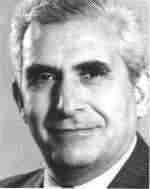 Parviz
F. Rad is Associate Professor and Director of Project Management Program
at The George Washington University. He holds an M.Sc. Degree from Ohio
State University and a Ph.D. from Massachusetts Institute of Technology. He
has 30 years of professional experience during which he has served in
governmental, industrial, and academic capacities. He has participated in
project management activities and in development and enhancement of
quantitative tools in project management in a multitude of disciplines
including software development, construction, and pharmaceutical research.
Dr. Rad has been recognized as a Professional Civil Engineer, Certified Cost
Engineer, and as a Project Management Professional. Parviz
F. Rad is Associate Professor and Director of Project Management Program
at The George Washington University. He holds an M.Sc. Degree from Ohio
State University and a Ph.D. from Massachusetts Institute of Technology. He
has 30 years of professional experience during which he has served in
governmental, industrial, and academic capacities. He has participated in
project management activities and in development and enhancement of
quantitative tools in project management in a multitude of disciplines
including software development, construction, and pharmaceutical research.
Dr. Rad has been recognized as a Professional Civil Engineer, Certified Cost
Engineer, and as a Project Management Professional.
Back
to top
|
|
Speakers
Clinic
Alan
Francis
The PICMET Speakers Clinic provides
on-site support services to our speakers enabling them to give their best
and most compelling presentation. Beginning with a concentrated 45-minute
tutorial, each presenter will be given the opportunity to meet individually
with the instructor. In this private session you can strengthen and polish
your public speaking skills insuring your ideas are communicated in a clear,
focused and informative style. There will be tips and techniques on
relaxation, positive imaging and chi kung to transform anxiety and
nervousness into assets.
 Clinic
Director Alan Francis holds post-secondary certifications to teach
and administrate in California and served as an academic dean. He assisted
in research that led to the implementation of the UCLA Pain Control Clinic
and was founder and director of Turnaround, a comprehensive psycho-social
services center in Los Angeles, California. He consults as strategic
planner, technical writer/researcher, conference clinic director and
facilitator for corporations and associations. Clinic
Director Alan Francis holds post-secondary certifications to teach
and administrate in California and served as an academic dean. He assisted
in research that led to the implementation of the UCLA Pain Control Clinic
and was founder and director of Turnaround, a comprehensive psycho-social
services center in Los Angeles, California. He consults as strategic
planner, technical writer/researcher, conference clinic director and
facilitator for corporations and associations.
Back
to top
|
|
Creating
an Environment That Fosters Innovation
Gerard
H. Gaynor
Innovation
Management Institute, Minneapolis, Minnesota
This tutorial explores the challenges
facing organizations that depend on innovation for sustained business
performance. Innovation can only survive in an environment that
understands the management of risks and uncertainties, an environment that
stimulates and energizes the organization, and an environment that balances
freedom with discipline. The session focuses on what it takes to build
an environment that supports innovation—no mysteries, just applying the
fundamentals.
Back
to top
|
|
What
Does It Take to Be An Innovator?
Gerard
H. Gaynor
Innovation
Management Institute, Minneapolis, Minnesota
This tutorial explores the
challenges facing innovators and prepares them to accept those challenges.
Innovation involves more than coming up with the next idea—it involves
taking the idea and pursuing it relentlessly to successful implementation.
The session focuses on the personal characteristics of an innovator; the
innovation process; overcoming resistance to innovation; the role of
resources and organizational infrastructure; and how to put it all together.
Gerard
H. (Gus) Gaynor is a retired international technology executive who held
positions in research, manufacturing engineering, product development, and
general business management at 3M, one of the world’s most innovative
organizations. Upon retirement from 3M, he organized G. H. Gaynor and
Associates, Inc., a consulting firm focusing on technology management and
innovation. He was designated a Senior Fulbright Scholar on two
occasions, 1990-91 and 1993-1994. He has three books related to
managing technology published by McGraw-Hill. He has taught at the
University of Minnesota Graduate Program in Managing Technology and is
currently an adjunct professor at St. Thomas University in St. Paul,
Minnesota. He is a Fellow and active volunteer in the Institute of
Electrical and Electronics Engineers.
Back
to top
|
|
Analytic
Network Process
Thomas
L. Saaty
This tutorial is about practical
decision-making that usually involves dependence and feedback among all the
factors using the Analytic Network Process (ANP) - a generalization of the
linear Analytic Hierarchy Process (AHP) developed by Saaty for
multi-criteria decision-making. Decisions are necessarily tied to our value
systems and we need a logic that can include human values along with
technical and engineering factors. The participants of this tutorial will
receive the ANP software.
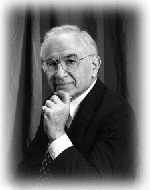 Thomas
L. Saaty holds the Chair of University Professor at the University of
Pittsburgh with appointments in the Operations Research Group of the
Graduate School of Business, in Mathematics, Industrial Engineering,
Philosophy of Science, sociology, International Security, and the Graduate
School of Public and International Affairs. He came there in 1979 after
ten years on the faculty of the Wharton School at the University of
Pennsylvania. He was also Executive Director of the Conference Board of
the Mathematical Sciences. He received his Ph.D. in mathematics from
Yale University and did post doctoral work at the University of Paris. He
then began his career with the MIT Operations Evaluation Group followed by
several years at the office of Naval Research one of which he spent as
Scientific Liaison Officer at the U.S. Embassy in London. He is the author
of 20 books in fields ranging from Operations Research and Management
Science to Conflict Resolution, Urban Design and Behavioral
Mathematics. Dr. Saaty is the originator of the Analytic Hierarchy
Process (AHP) and partner with Professor Ernest H. Forman, of George
Washington University, in producing the computer software package Expert
Choice based on the AHP. He has lectured and consulted on the process and
its uses in the United States and abroad to numerous business, government
and academic communities. He has authored and co-authored twelve books on
this subject, one of which Decision Making for Leaders, has been recently
translated to seven languages, and another Multicriteria Decisions: The
Analytic Hierarchy Process translated to Chinese and Russian. Thomas
L. Saaty holds the Chair of University Professor at the University of
Pittsburgh with appointments in the Operations Research Group of the
Graduate School of Business, in Mathematics, Industrial Engineering,
Philosophy of Science, sociology, International Security, and the Graduate
School of Public and International Affairs. He came there in 1979 after
ten years on the faculty of the Wharton School at the University of
Pennsylvania. He was also Executive Director of the Conference Board of
the Mathematical Sciences. He received his Ph.D. in mathematics from
Yale University and did post doctoral work at the University of Paris. He
then began his career with the MIT Operations Evaluation Group followed by
several years at the office of Naval Research one of which he spent as
Scientific Liaison Officer at the U.S. Embassy in London. He is the author
of 20 books in fields ranging from Operations Research and Management
Science to Conflict Resolution, Urban Design and Behavioral
Mathematics. Dr. Saaty is the originator of the Analytic Hierarchy
Process (AHP) and partner with Professor Ernest H. Forman, of George
Washington University, in producing the computer software package Expert
Choice based on the AHP. He has lectured and consulted on the process and
its uses in the United States and abroad to numerous business, government
and academic communities. He has authored and co-authored twelve books on
this subject, one of which Decision Making for Leaders, has been recently
translated to seven languages, and another Multicriteria Decisions: The
Analytic Hierarchy Process translated to Chinese and Russian.
Back
to top
|
|
Intel's
Path to Becoming 100% e-Corporation
Bud
Stratton, Bill Giard, John Cartwright
During this session we will address
three related topics: First, we will provide an overview of Intel
Corporation's efforts to evolve toward a 100% e-Corporation. Second, we will
look at technological advancements in both the Internet medium and
thin-client technology that have enabled Intel to provide its suppliers with
real-time data in a quick and cost effective manner. We will highlight two
solutions that are helping to shape the way Intel is doing business. Lastly,
we will address industry efforts to drive the development and adoption of
data exchange standards referred to as RosettaNet standards. Specific
attention will be given to the progress being made in two of the seven
RosettaNet business clusters-Product Data and Manufacturing.
 Bud
Stratton Bud
Stratton
BSEE Oregon State
University; MEIE Texas A&M
University; Masters business
mgmt, Stanford University (Sloan Fellow); PhD candidate
Portland State University; Co-manager for
Intel Source Applications.
Bud
is responsible for development, implementation and sustainment of Intel’s
supply chain source applications.
These applications span all of Intel and include Intel’s ERP and
PDM systems as well as other associated applications including supplier
facing web applications.
 William
Giard William
Giard
BSCS Portland State University; Sr. Programmer/Analyst, Intel Corp.
Bill
joined Intel as a recent college graduate from Portland State University in
1996. He began with Intel
working on the design engineering application helping to push new database
technologies. He has worked
closed with Microsoft to increase the functionality and robustness of MS
SQLServer's replication engine. Bill's
current focus is on improving Intel's e-business architecture, bringing rich
client functionality to a thin-client browser, and has written internal and
external facing applications using these technologies.
Bill is a Microsoft Certified Systems Engineer (MCSE) and an Intel
Certified Web Developer.

John
Cartwright
BS Computer
Applications, California State University, Fresno; MS Information Systems Management, University of
Southern California; Program Manager, Supply Chain Applications,
Mergers, Acquisitions and Outsourcing, Intel Corp.
John
is responsible for the planning and integration of Supply Chain
Applications into Intel mergers and acquisitions. He is also on-loan to
RosettaNet as the Product Manager of two of their six clusters, Product
Information and Manufacturing. John is responsible for the segment and PIP
architecture within these two clusters and is the Program Manager for
Discrete Manufacturing. John also Chairs the NEMI Factory Information
System (FIS) Technical Implementation Group that successfully completed
the factory Plug and Play project and initiated the Virtual Factory
Implementation Project (VFIIP). VFIIP has created three specific areas for
supply chain standards; manufacturing product genealogy information,
manufacturing product quality information and product design configuration
data.
Back
to top
|
|
Competitive Strategies in High-Tech Industries
Al
Herman
Quantric Corporation
Strategic management in the intensely
competitive environments characteristic of many high-tech industries
requires the use of methods and tools keyed to the dynamics of that
environment. This tutorial is intended to familiarize participants with
current concepts, tools and methods used to analyze, formulate and implement
competitive strategies in high-tech industries. Covered topics include:
strategy development models, strategy archetypes (including e-business
models), industry and competitor analysis, business intelligence tools,
sources and sustainability of competitive advantage, quantitative dynamics
of competition and strategy implementation tools.
 Al
Herman is founder and President of Quantric Corporation, a
management-consulting firm providing strategic management services to
high-tech companies. Prior to founding Quantric, Dr. Herman was VP and
General Manager of Planar Advance, Inc., a developer and manufacturer of
flat panel displays and display systems in Beaverton, Oregon. For nine years
prior to that he was President and General Manager of Tektronix Federal
Systems group with businesses in electronic displays and electronic test
equipment. During the preceding nine years he held various senior management
positions with Gould, Inc. including Corporate VP of Product and Technology
Development, Group VP of Finance and Planning, VP of Advanced Programs and
VP of Business Development. Dr. Herman has a BA in Mathematics, an MBA in
Finance and Marketing and a PhD in Strategic Management. His doctoral
research examined the technology strategies of 100 US electronics companies
and their financial performance correlates. He currently teaches a graduate
course in Competitive Strategy at Portland State University. Industry
affiliations include the Institute of Electrical and Electronics Engineers
(IEEE), the International Society for Optical Engineering (SPIE), the
Society of Competitive Intelligence Professionals (SCIP) and Omega Rho, the
Operations Research honor society. Al
Herman is founder and President of Quantric Corporation, a
management-consulting firm providing strategic management services to
high-tech companies. Prior to founding Quantric, Dr. Herman was VP and
General Manager of Planar Advance, Inc., a developer and manufacturer of
flat panel displays and display systems in Beaverton, Oregon. For nine years
prior to that he was President and General Manager of Tektronix Federal
Systems group with businesses in electronic displays and electronic test
equipment. During the preceding nine years he held various senior management
positions with Gould, Inc. including Corporate VP of Product and Technology
Development, Group VP of Finance and Planning, VP of Advanced Programs and
VP of Business Development. Dr. Herman has a BA in Mathematics, an MBA in
Finance and Marketing and a PhD in Strategic Management. His doctoral
research examined the technology strategies of 100 US electronics companies
and their financial performance correlates. He currently teaches a graduate
course in Competitive Strategy at Portland State University. Industry
affiliations include the Institute of Electrical and Electronics Engineers
(IEEE), the International Society for Optical Engineering (SPIE), the
Society of Competitive Intelligence Professionals (SCIP) and Omega Rho, the
Operations Research honor society.
Back
to top |
|
The Joy of Bibliographies: An Introduction to
Bibliography Management Tools
Anderson, Timothy
Portland State University
The literature review is frequently the least enjoyed
part of doing a research project and perhaps even described as painful. We
will show how to organize and conduct your literature review from the
initial literature search to formatting the bibliography using EndNote.
Freeing time from the busy work of formatting requirements can enable you to
focus on the most interesting and valuable part of the literature review -
reading the literature and structuring your write-up. Back
to top |
|
Creative R, D, & E Teams
Mike
Beyerlein and Jill Nemiro
Technical professionals work
increasingly in a variety of team forms to be able to contribute most
effectively to the work of an organization. This workshop examines team
designs, the factors that make them succeed or fail, and the conditions that
promote creativity and innovation in teams and team-based organizations.
Michael Beyerlein
is Director of the Center for the Study of Work Teams and Professor of
Industrial/Organizational Psychology at the University of North Texas. His
research interests include all aspects of work teams, organization
transformation, work stress, creativity/innovation, knowledge management and
the learning organization, and complex adaptive systems. He has published in
a number of research journals and has been a member of the editorial boards
for TEAM Magazine, Team Performance Management Journal, and Quality
Management Journal. Currently, he is senior editor of the JAI Press/Elsevier
annual series of books Advances in Interdisciplinary Study of Work Teams
with seven volumes in print and two in preparation, including Team
Leadership, Knowledge Work in Teams, and Product Development Teams. He is
also organizing the launch of a new series of books for Jossey-Bass Pfeiffer
on collaborative work systems. In addition, he has been co-editor with Steve
Jones on two ASTD case books about teams and edited a book on the global
history of teams, Work teams: Past, Present and Future. He is co-editing a
book, a fieldbook, and a workbook with virtual teams of experts from across
the U.S. on collaborative work systems.
 Jill Nemiro is an Assistant Professor in
the Behavioral Sciences Department at California State Polytechnic
University, Pomona; and an adjunct professor in the Human Resources
Development Masters Program at Claremont Graduate University. She has also
served on the faculty at California State University, Long Beach; California
State University, Los Angeles; CSPP-LA, and Chaffey Community College. Jill Nemiro is an Assistant Professor in
the Behavioral Sciences Department at California State Polytechnic
University, Pomona; and an adjunct professor in the Human Resources
Development Masters Program at Claremont Graduate University. She has also
served on the faculty at California State University, Long Beach; California
State University, Los Angeles; CSPP-LA, and Chaffey Community College.
In addition, Jill has worked for twenty years in the entertainment industry,
as a film and videotape editor, specializing in management training and
corporate videos, children's television programs, and documentaries.
Her research interests are in the area of organizational and group
creativity, and the virtual workplace. She has published articles recently
in Creativity Research Journal and the Journal of Creative Behavior. Her
recent book chapters can be found in Advances in the Interdisciplinary Study
of Work Teams, The Encyclopedia of Creativity, and Knowledge Management and
Virtual Organizations. She has presented papers at the Academy of Management
Conference, American Educational Research Association Conference,
International Conference for Advances in Management, Institute for
Behavioral and Applied Management, Western Psychological Association
Conference, and the University of North Texas' Symposiums on Individual,
Team, and Organizational Effectiveness and Collaborative Work Systems.
She has worked as a research associate for the Museum of Creativity Project
at the Milken Foundation, for the Institute for the Academic Advancement of
Youth with Johns Hopkins University, and for WestED.
Dr. Nemiro received her Ph.D. in Organizational Psychology from Claremont
Graduate University in 1998. She has a Master of Arts degree in Industrial
and Organizational Psychology from California State University, Los Angeles;
as well as a Bachelor of Arts degree in Motion Picture/Television from the
University of California, Los Angeles.
|

GENERAL INFORMATION:
General Information -
Conference Focus -
Content Areas -
Who Should Attend
Organization Chart -
Board of Directors
Executive Committee -
Advisory Council -
Organizing Committee -
Regional Coordinators
CONFERENCE
Author Center -
Search Submission
SEARCH
CONTACT

Webmaster
07/15/02

|